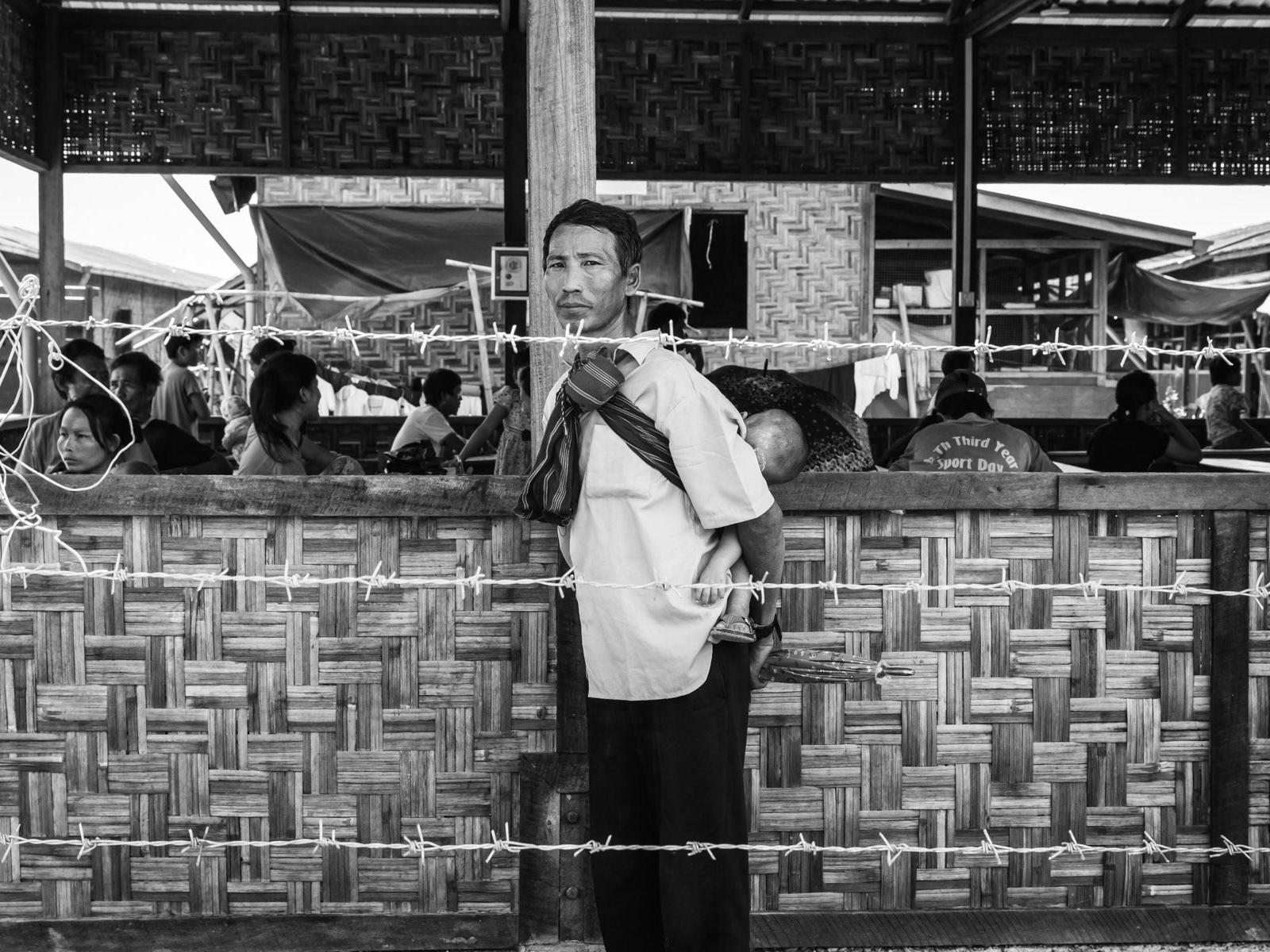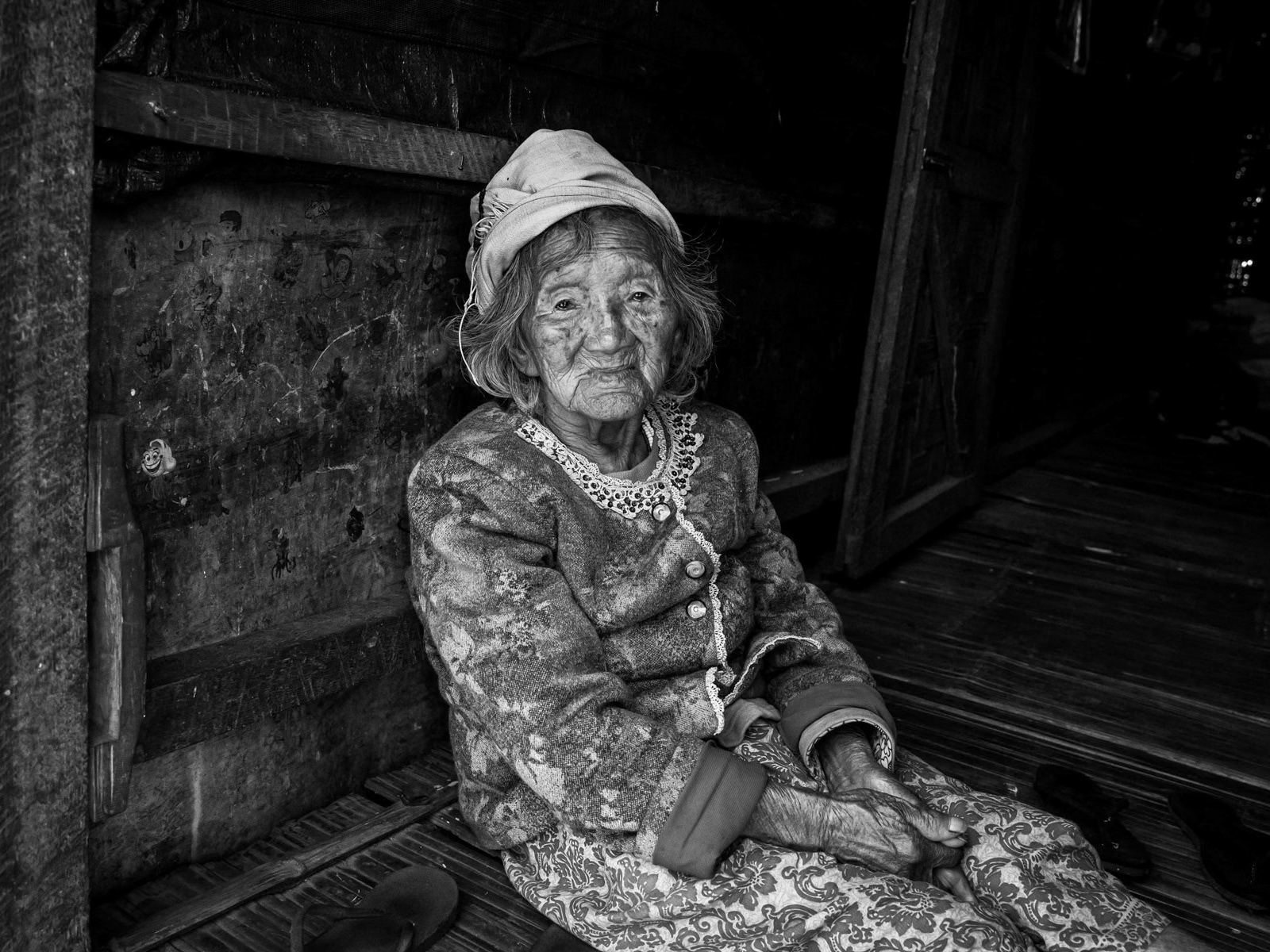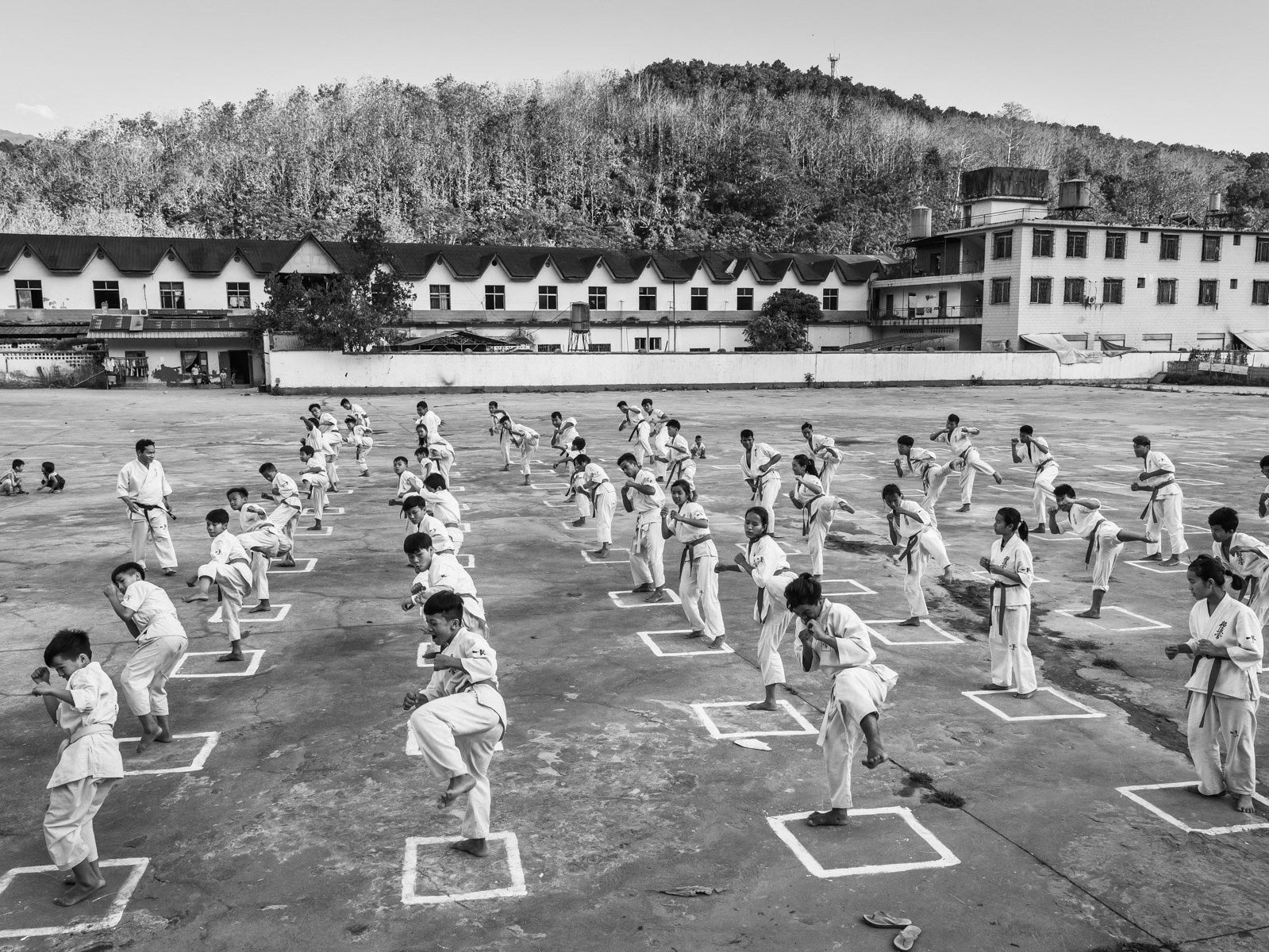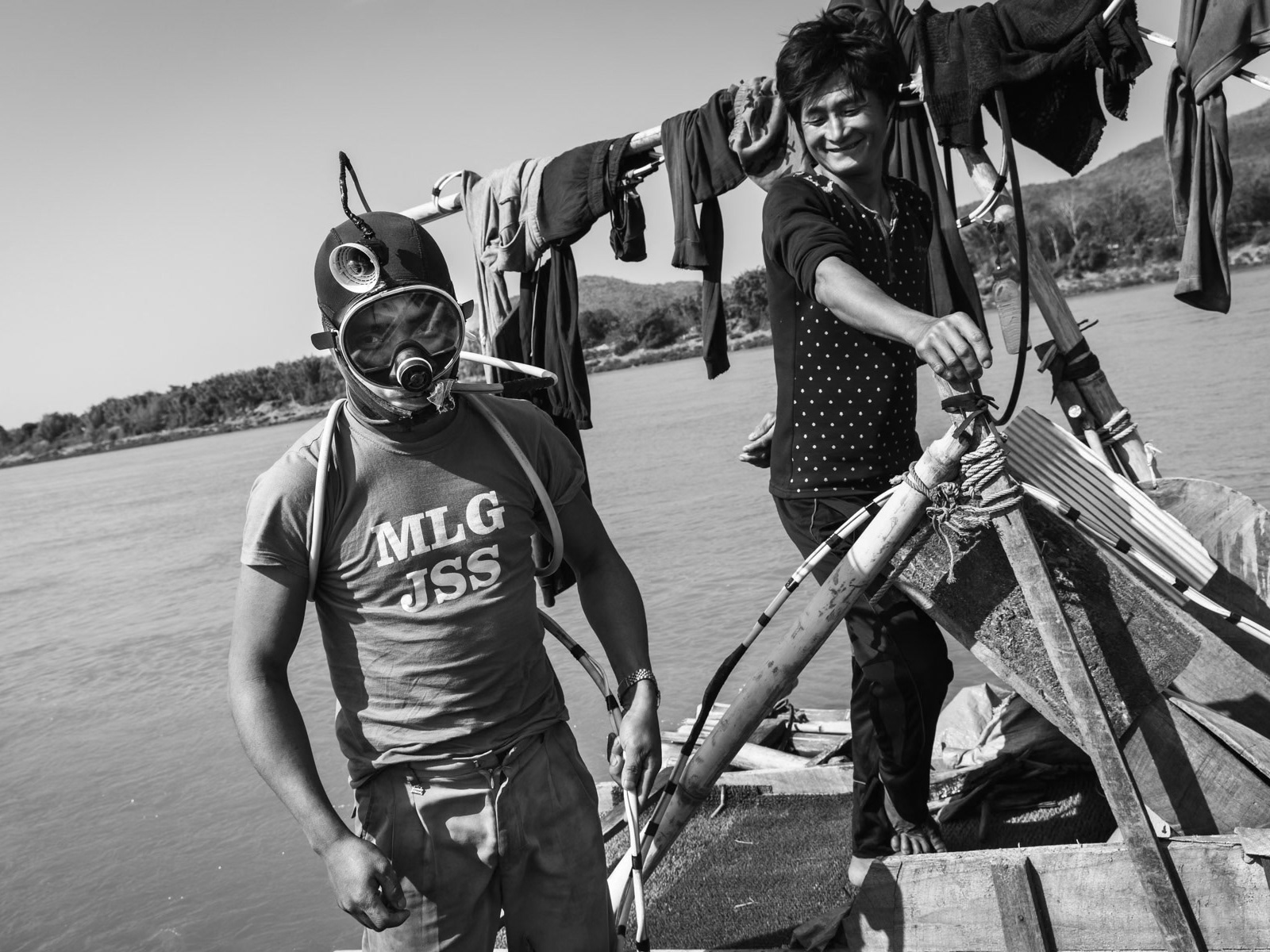Kachin State in northern Myanmar has long been plagued by conflict, deeply impacting its population. The fighting between the Kachin Independence Army (KIA) and the Myanmar military, which reignited in 2011 after a 17-year ceasefire, has caused widespread displacement and suffering. The region, rich in natural resources like jade and timber, is a focal point for tensions tied to ethnic self-determination and control over resources.
As of recent years, tens of thousands of people live in internally displaced persons (IDP) camps, many for over a decade. These camps, often in remote areas, face chronic shortages of food, healthcare, and education, leaving residents dependent on humanitarian aid. Overcrowding, lack of livelihood opportunities, and limited freedom of movement exacerbate the hardships. Prolonged displacement has led to intergenerational challenges, with children growing up without stable homes or access to quality education.
The conflict has also taken a toll on mental health, community cohesion, and economic prospects for the displaced. Many IDPs remain caught between unsafe conditions in their villages and uncertain futures in the camps. Recent escalations and shifting frontlines continue to threaten the fragile security of the region, making a resolution to the crisis increasingly urgent.
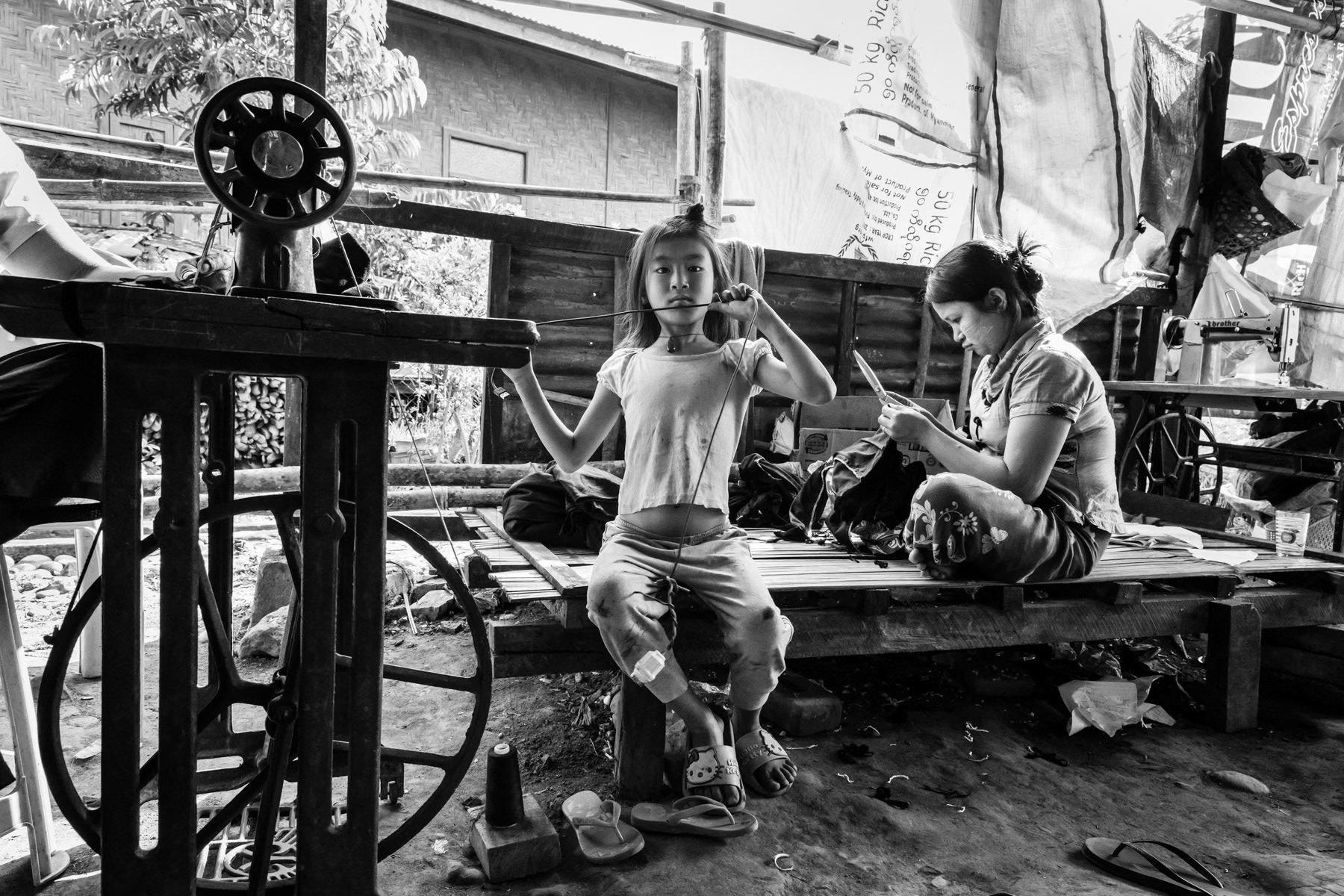
Kachin girl that has been living since 2011 in a camp for internally displaced persons in Kachin State. Over 100,000 Kachin are displaced within their own country as a result of a long lasting armed conflict between the Myanmar Army and the Kachin Independence Army {KIA). Ziun IDP camp in government controlled territory, Myanmar, March 2019
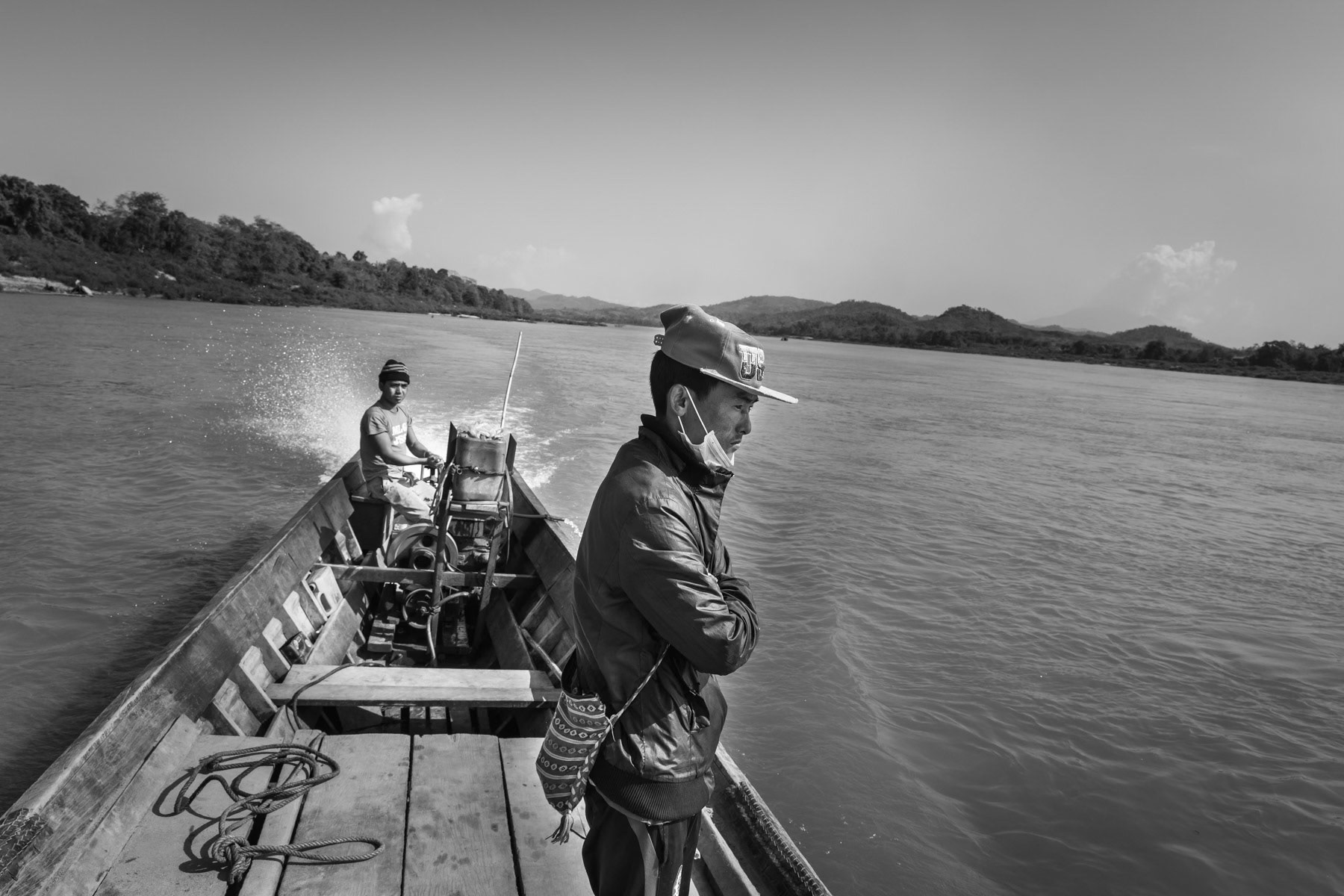
Crossing the Irrawaddy river. A controversial dam project in this area as part of the Chinese Belt and Road infrastructure projects that will undoubtly erase numerous villages along the river and deprive the local Kachin population of fertile lands. The project has been shelved but could be restarted very soon. The electricity produced by the dam would for more than 90% go to bordering Yunnan province in China. Irrawaddy river, Myitkyina, Kachin State, March 2019

Kachin settled in a camp for internally displaced persons in Myitkyina. Trinity IDP camp, Kachin State, Myanmar, February 2019 There are over a million Kachin people in northern Myanmar and about 150,000 in Yunan, China. Thousands have sought asylum in Thailand and Malaysia following a long lasting guerilla war between the Kachin Independence Army (KIA) and Myanmar government troops. Kachin were originally animist, however as of 1860, British and American missionaries began converting Kachin people to Baptism and other Protestant faiths. Nowadays, nearly all Kachin self-identify as Christians. The church plays today a fundamental role in Kachin's society and social services for the large displaced population. When Burma achieved its independence, the Kachin people got their own State within Burma along strong assurances of significant regional autonomy. Kachin State is very rich in natural resources such as tropical timber, gold, jade and is located in the "Golden Triangle" known for its opium production. Despite autonomy the Burmese government and later the military junta intervened heavily in Kachin's affairs depriving it of its natural wealth and access to development funds. This led militant Kachin leaders to take up arms and form the Kachin Independence Army in 1961, and starting a guerilla war against the government. The war continued relentlessly until a cease-fire in 1994 that lasted until 2011. Despite repeated rounds of negotiations and short-lived cease-fires, fighting has continued with regular occurrence displacing over a 100,000 ethnic Kachin since 2011. Human Rights groups have collected testimony of severe human rights abuses such as land confiscation, mass rape and summary executions by government troops against the Kachin people. As a result of the violence and human rights abuses over a 100,000 ethnic Kachin live in camps for internally displaced persons (IDP) along the Chinese border in KIA controlled territory and in IDP camps in government controlled territory. The humanitarian and psychological situation in the camps is alarming and extremely precarious in KIA controlled territory where humanitarian aid and food only reaches the area sporadically when government troops do not block all access. The border with China is also closed for humanitarian convoys leaving the IDPs in KIA controlled territory in an extremely vulnerable situation and in usually very romote mountain areas. In meanwhile the Myanmar military hinges on their control of these border areas that are extremely lucrative in terms of natural resources (jade and gold), illigal substances (drugs), plantations (banana) and Chinese large scale development projects as the Mytsone dam on the Irrawaddy river.
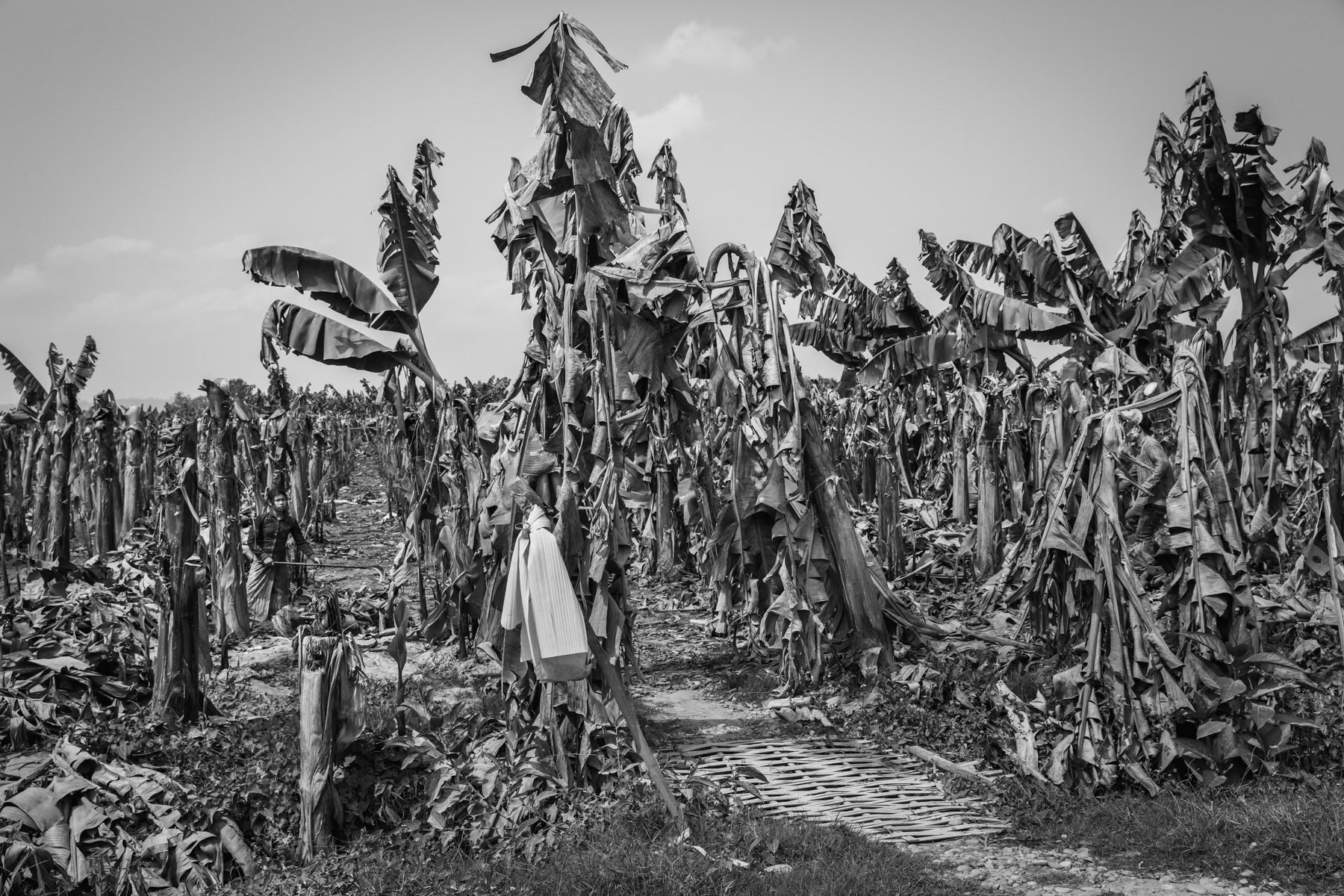
Banana plantations established and managed by Chinese companies using cheap labour among the Kachin IDP population and highly toxic chemicals and fertilisers causing fatal health issues among the plantation workers. The used land is often expropriated and owned by IDPs that do not have any mean to fight widespread land grab. The environmental footprint is also disastrous for the soil, drinkable water and the rivers with infested water, dead fish and soil as result. The bananas are being packed in boxes marked "from Equador" or "from Laos" and driven directly to China. Waingmaw, Kachin State, Myanmar, March 2019
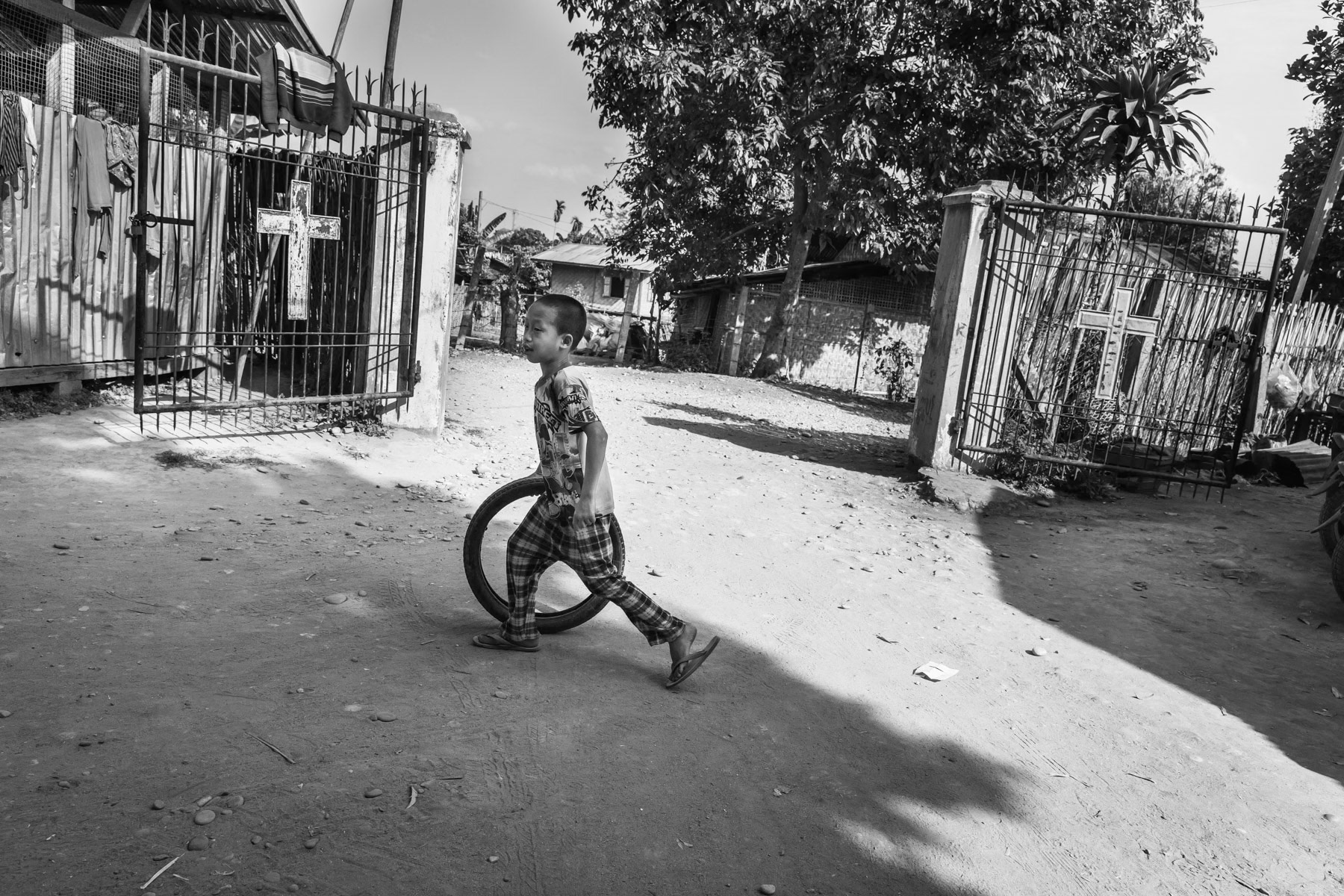
Kachin child playing in an IDP camp built on a church compound. Over 100,000 Kachin are displaced within the Kachin State since the armed conflict resumed in 2011 between the Myanmar military and the Kachin Independence Army (KIA). Mali Yang IDP camp near Myitkyina in government controlled territory, Myanmar, March 2019
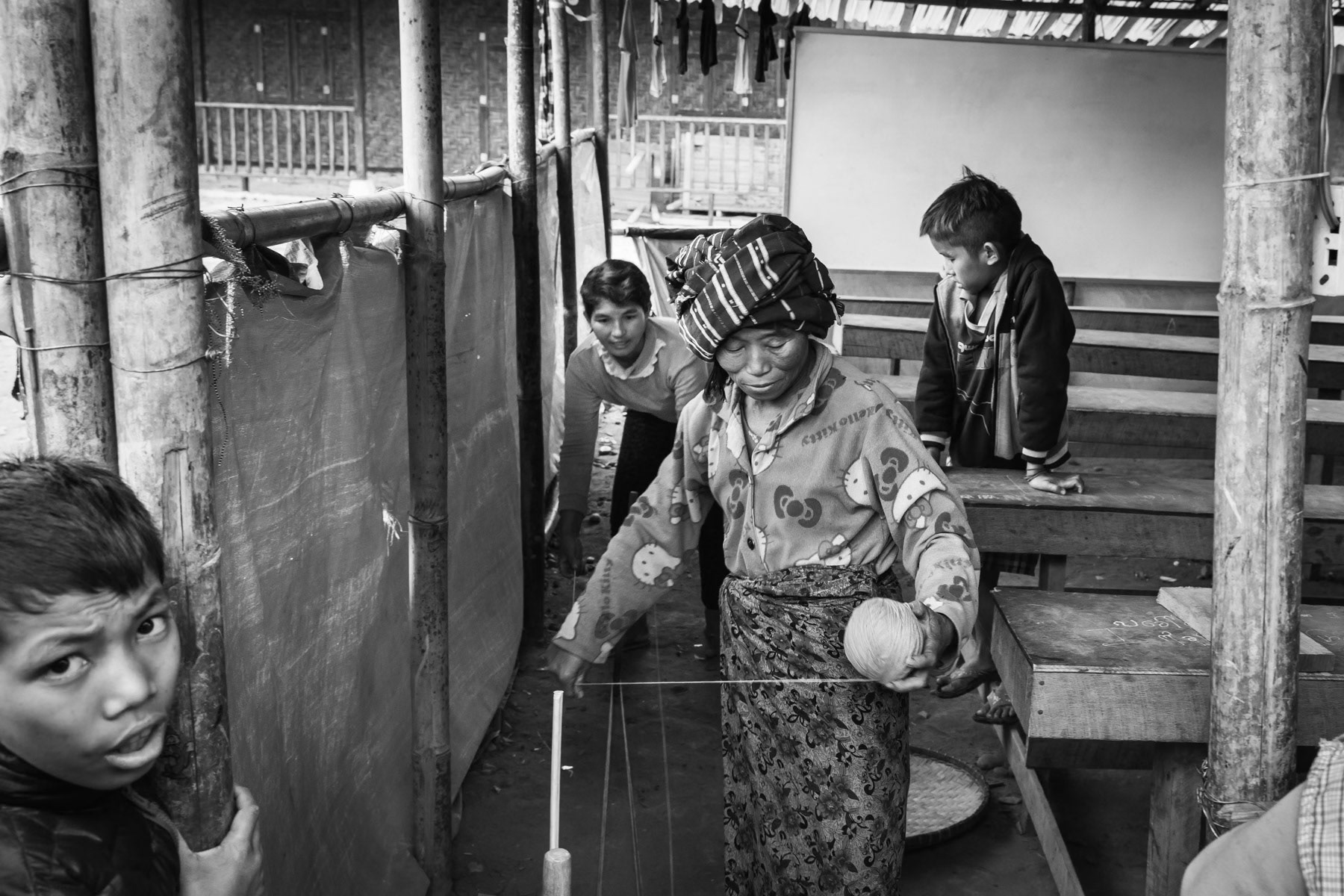
Kachin displaced persons weaving wool for the cold winters. Trinity IDP camp in Myitkyina in Kachin State, Myanmar, February 2019
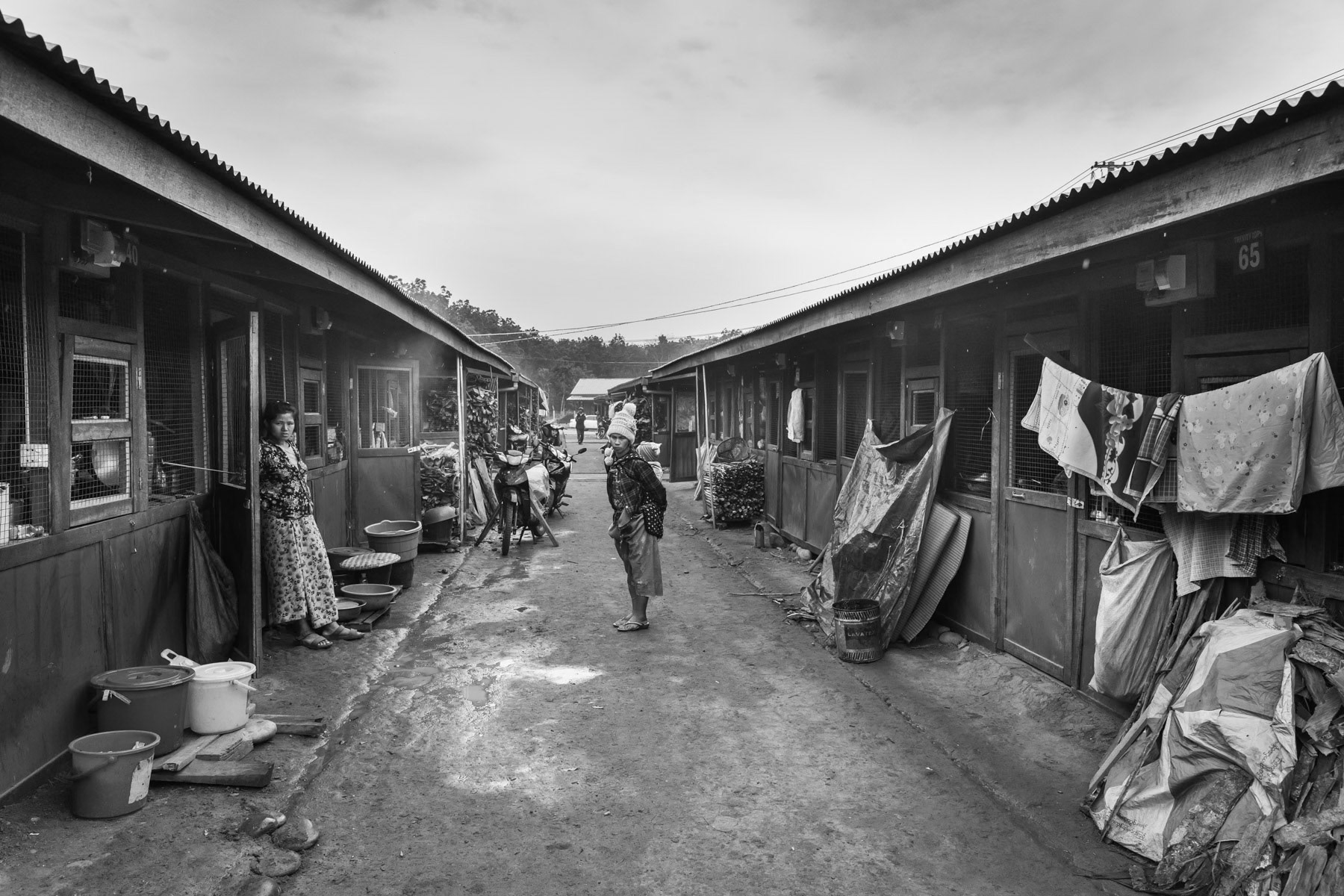
A camp for internally displaced persons from Kachin State. Over 100,000 Kachin are displaced within the Kachin State since the armed conflict resumed in 2011 between the Myanmar military and the Kachin Independence Army (KIA). Trinity IDP camp near Myitkyina in government controlled territory, Myanmar, February 2019
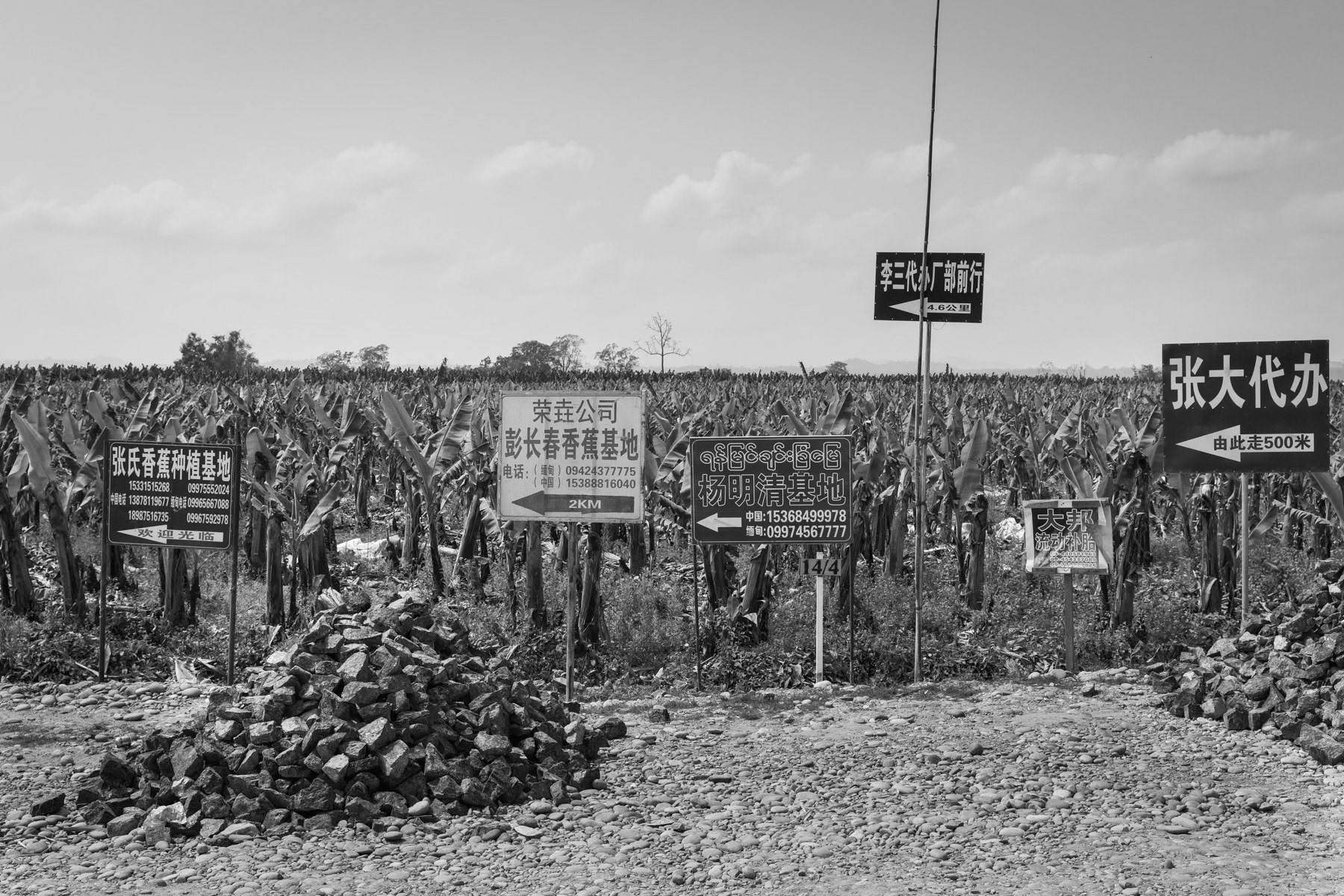
Banana plantations established and managed by Chinese companies using cheap labour among the Kachin IDP population and highly toxic chemicals and fertilisers causing fatal health issues among the plantation workers. The used land is often expropriated and owned by IDPs that do not have any mean to fight widespread land grab. The environmental footprint is also disastrous for the soil, drinkable water and the rivers with infested water, dead fish and soil as result. The bananas are being packed in boxes marked "from Equador" or "from Laos" and driven directly to China. Waingmaw, Kachin State, Myanmar, March 2019
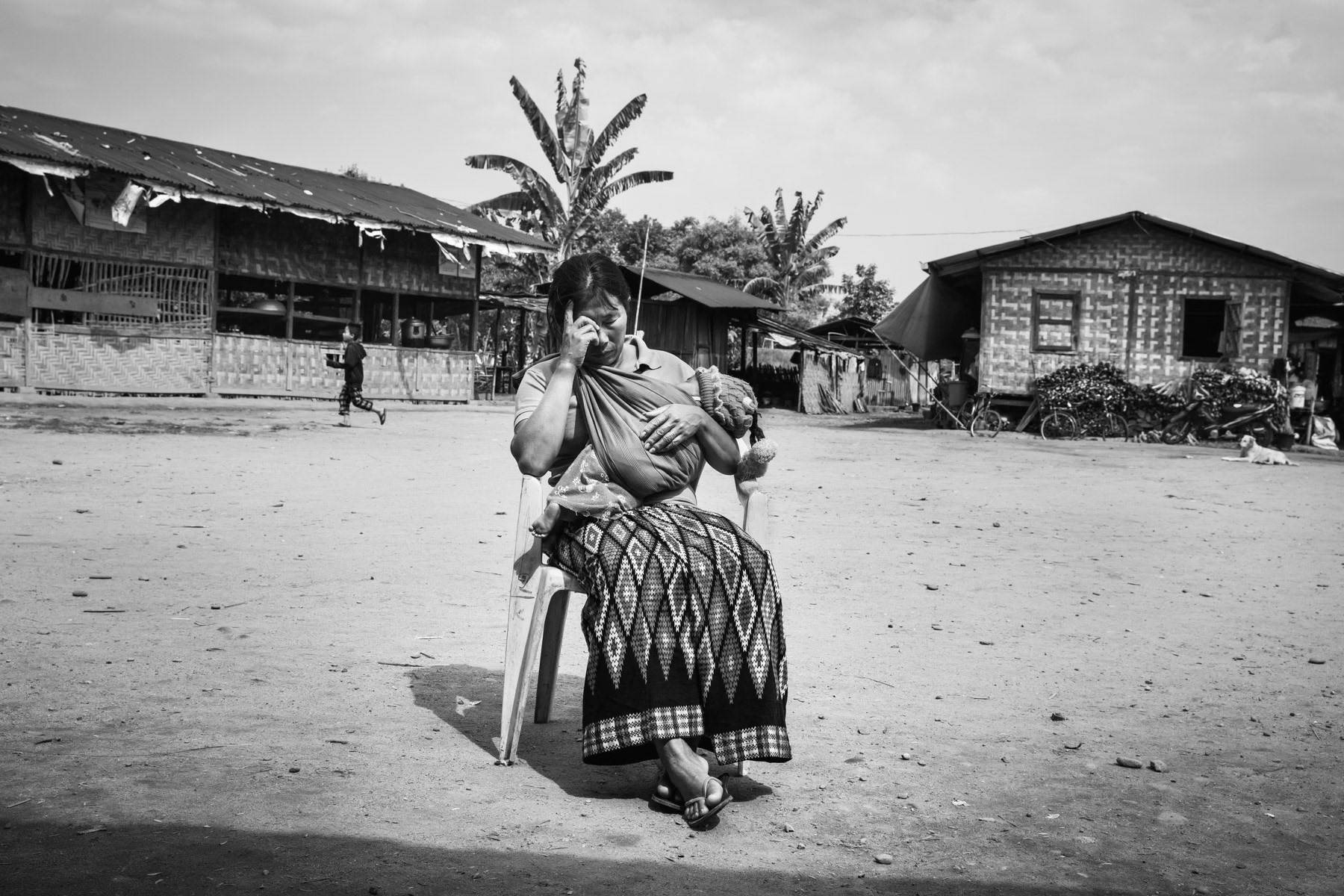
Kachin woman and child in a camp for internally displaced persons in Kachin State. There are more than 130 IDP camps througout Kachin hosting 100,000 displaced persons. Jan Mai Kuang IDP camp near Myitkyina, Myanmar, March 2019

Shelter for Kachin internally displaced persons. All IDP camps in government controlled territory have been set up on land owned by local Christian churches as government land was not made available. The majority of Kachin follow the Christian faith. Jan Mai Kuang IDP camp, Myitkyina, Myanmar, March 2019

Camp for internally displaced persons from Kachin State. Over 100,000 Kachin are displaced within the Kachin State since the armed conflict resumed in 2011 between the Myanmar military and the Kachin Independence Army (KIA). Maina IDP camp near Waingmaw in government controlled territory, Myanmar, March 2019
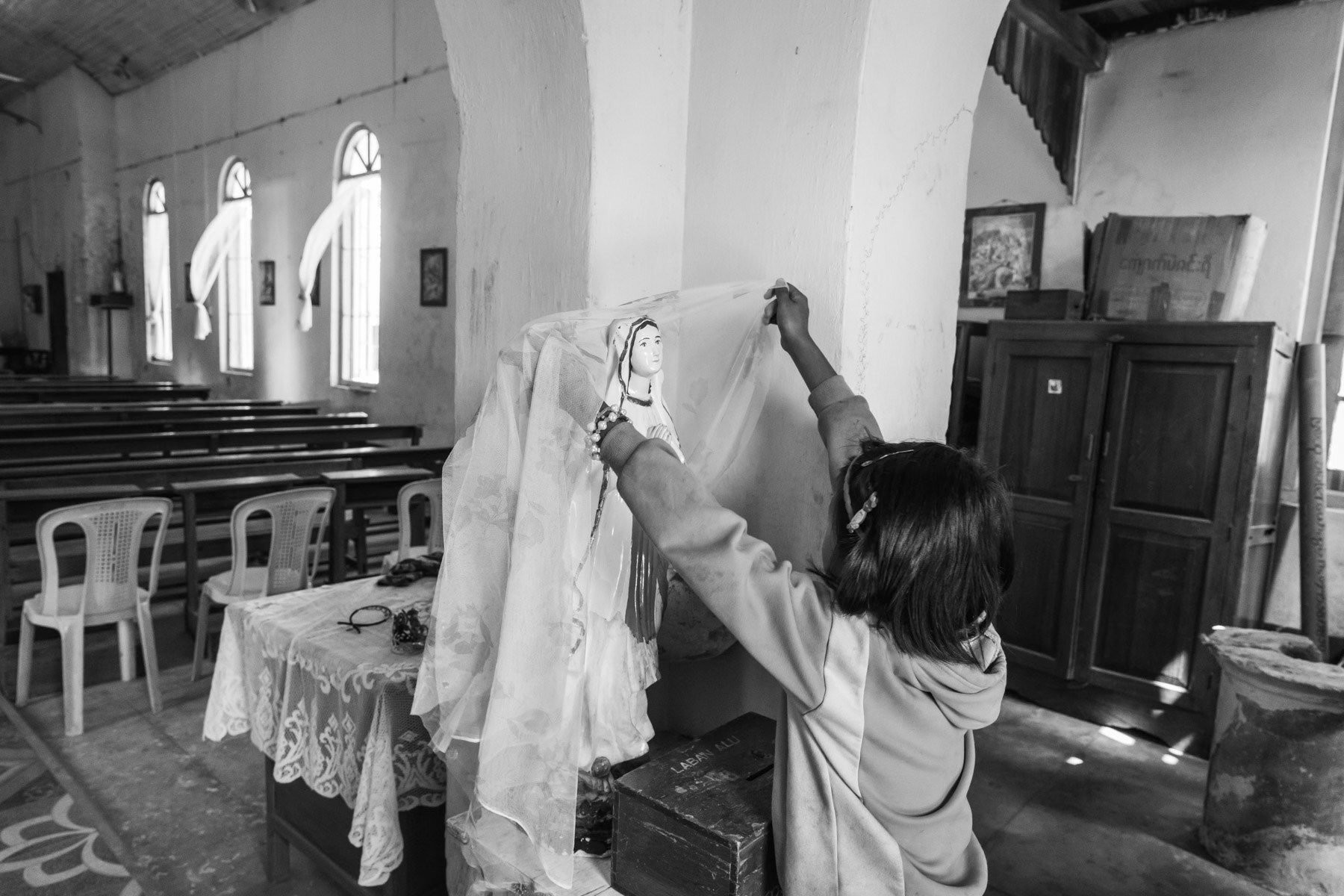
A Kachin girl in the Catholic church of Tang Hpye, a village that was evacuated before the planned Myitsone dam project that will flood the area. People from the village have been resettled in a newly built village 20km away. Kachin State, Myanmar, March 2019

Kachin children playing traditional volley football in a camp for internally displaced persons in Myitkyina. Jan Mai Kuang IDP Camp, Kachin State, Myanmar, March 2019
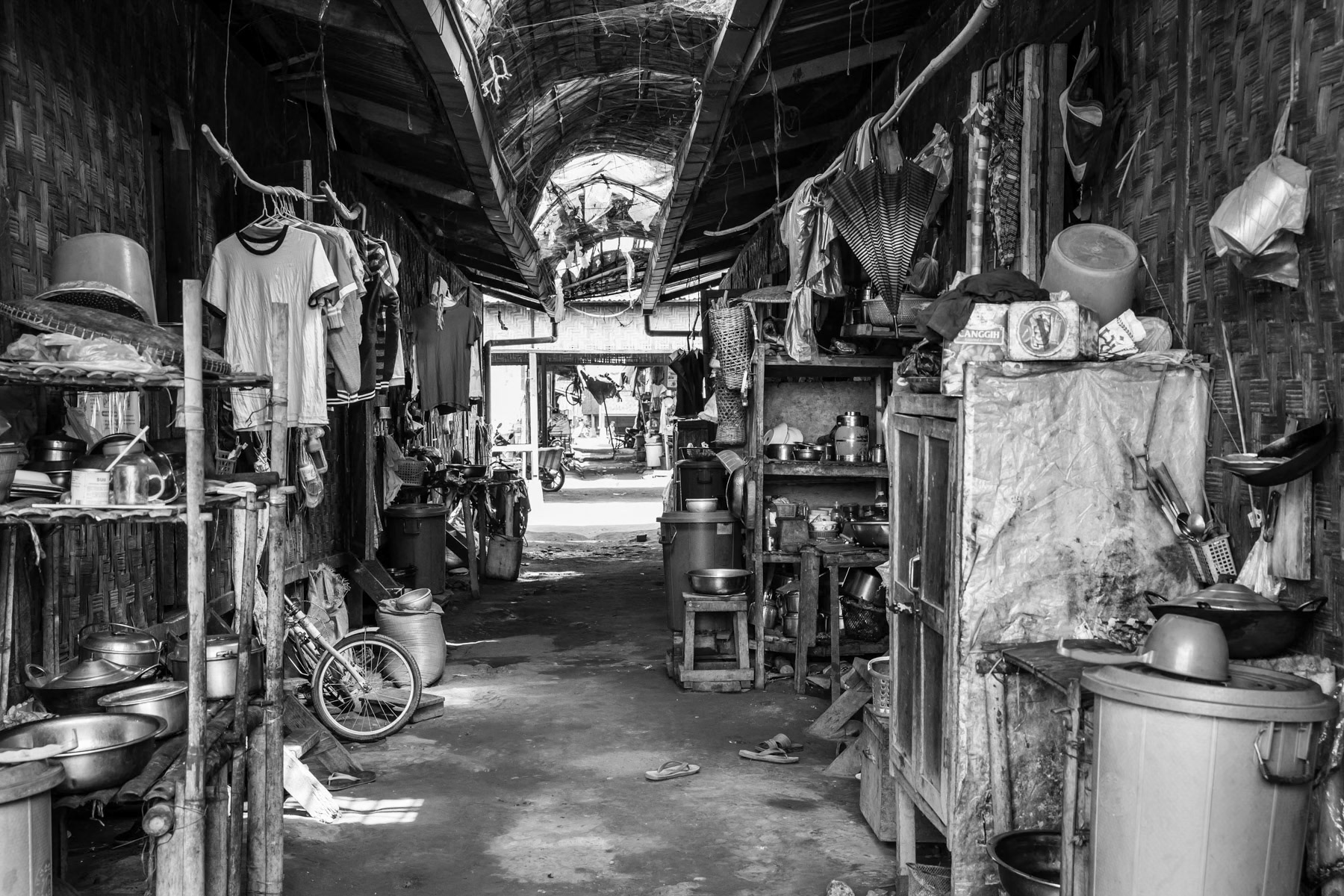
Shelters for Kachin internally displaced persons. All IDP camps in government controlled territory have been set up on land owned by local Christian churches as government land was not made available. The majority of Kachin follow the Christian faith. Jan Mai Kuang IDP camp, Myitkyina, Myanmar, March 2019

Kachin Women attending a mother and child healthcare workshop in a camp for internally displaced persons. Over 100,000 Kachin are displaced within the Kachin State since the armed conflict resumed in 2011 between the Myanmar military and the Kachin Independence Army (KIA). Jan Mai Kuang IDP camp near Myitkyina in government controlled territory, Myanmar, March 2019

The Irrawaddy confluence, a local attraction now, but soon to be the site of a controversial dam project as part of the Chinese Belt and Road infrastructure projects that will undoubtly erase numerous villages along the river and deprive the local Kachin population of fertile lands. The project has been shelved but could be restarted very soon. The electricity produced by the dam would for more than 90% go to bordering Yunnan province in China. Irrawaddy river, Myitkyina, Kachin State, March 2019

Kachin woman victim of a stroke living in a camp for displaced persons near Myitkyina in Kachin State. Jan Mai Kuang IDP camp, Myanmar, March 2019

Banana plantations established and managed by Chinese companies using cheap labour among the Kachin IDP population and highly toxic chemicals and fertilisers causing fatal health issues among the plantation workers. The used land is often expropriated and owned by IDPs that do not have any mean to fight widespread land grab. The environmental footprint is also disastrous for the soil, drinkable water and the rivers with infested water, dead fish and soil as result. The bananas are being packed in boxes marked "from Equador" or "from Laos" and driven directly to China. Waingmaw, Kachin State, Myanmar, March 2019

Kachin children playing in an IDP camp built on church land. Over 100,000 Kachin are displaced within the Kachin State since the armed conflict resumed in 2011 between the Myanmar military and the Kachin Independence Army (KIA). Jan Mai Kuang IDP camp near Myitkyina in government controlled territory, Myanmar, March 2019
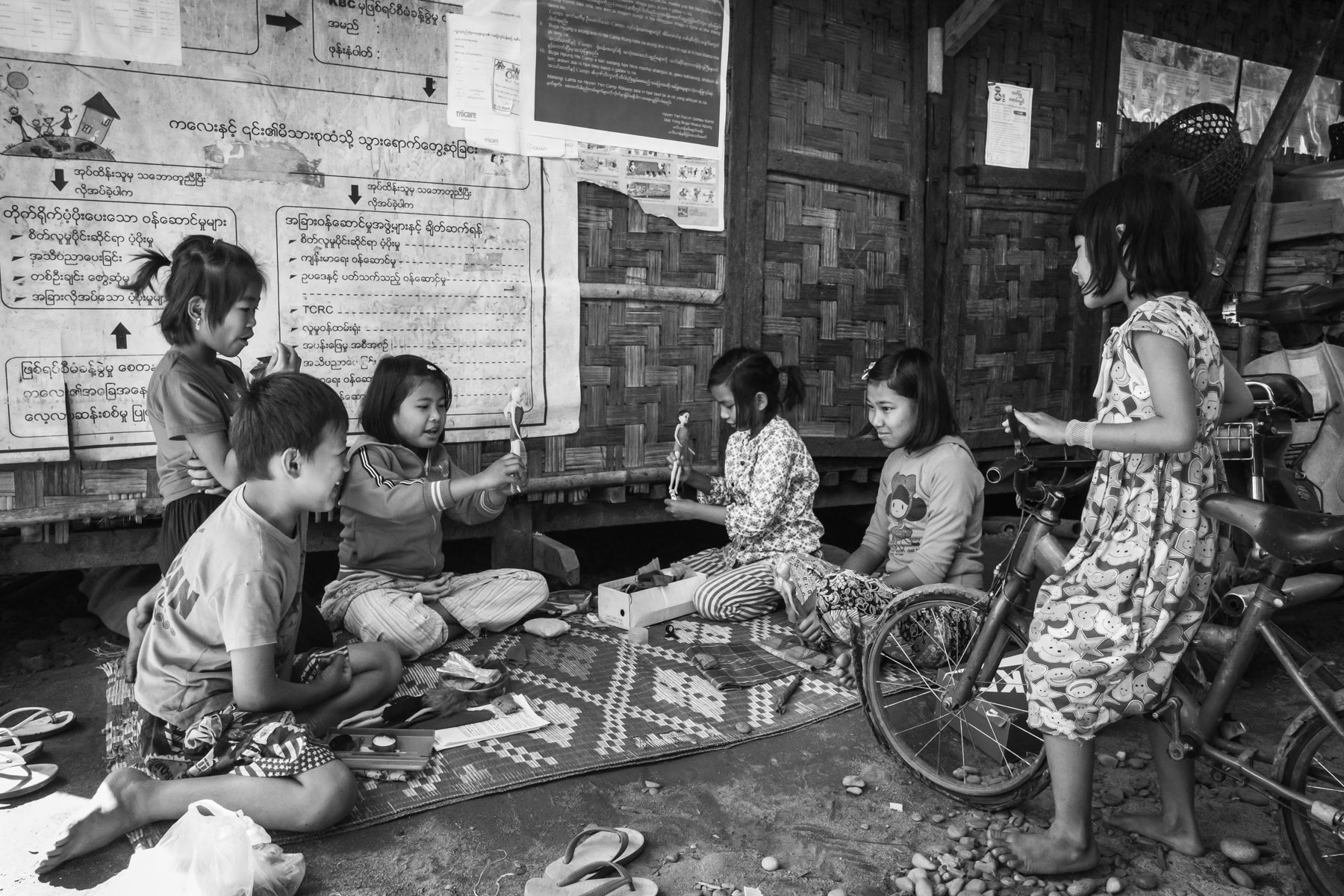
Kachin children playing in an IDP camp built on the church compound. Over 100,000 Kachin are displaced within the Kachin State since the armed conflict resumed in 2011 between the Myanmar military and the Kachin Independence Army (KIA). Mali Yang IDP camp near Myitkyina in government controlled territory, Myanmar, March 2019

Kachin girl that has been living since 2012 in a camp for internally displaced persons in Kachin State. Over 100,000 Kachin are displaced within their own country as a result of a long lasting armed conflict between the Myanmar Army and the Kachin Independence Army {KIA). Maina IDP camp in government controlled territory, Waingmaw, Myanmar, March 2019
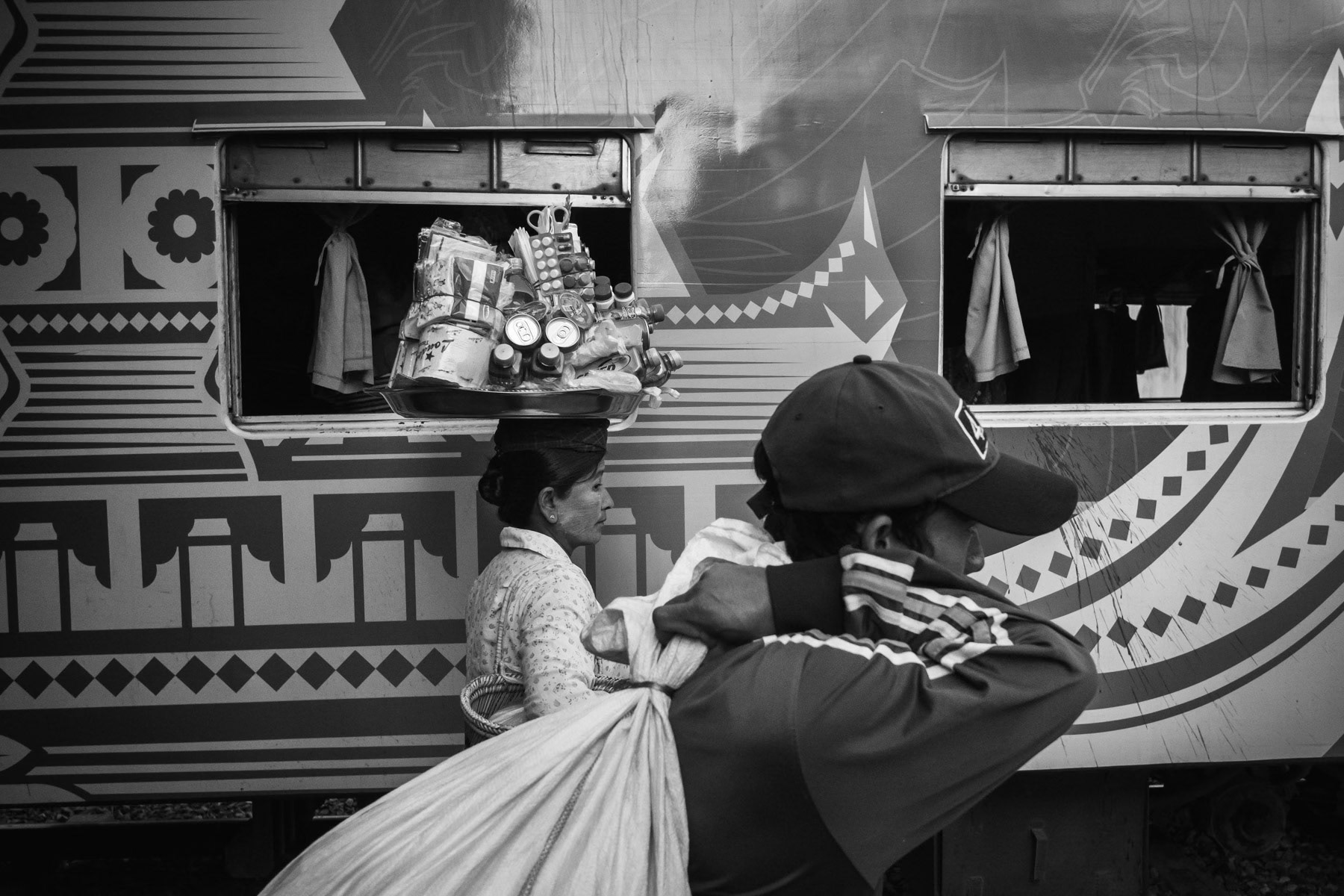
Travellers and sellers at Myitkyina train station, the last stop on the Yangon-Mandalay-Myitkyina line after a 36-40 hours journey. Myitkyina in Kachin State, Myanmar, March 2019
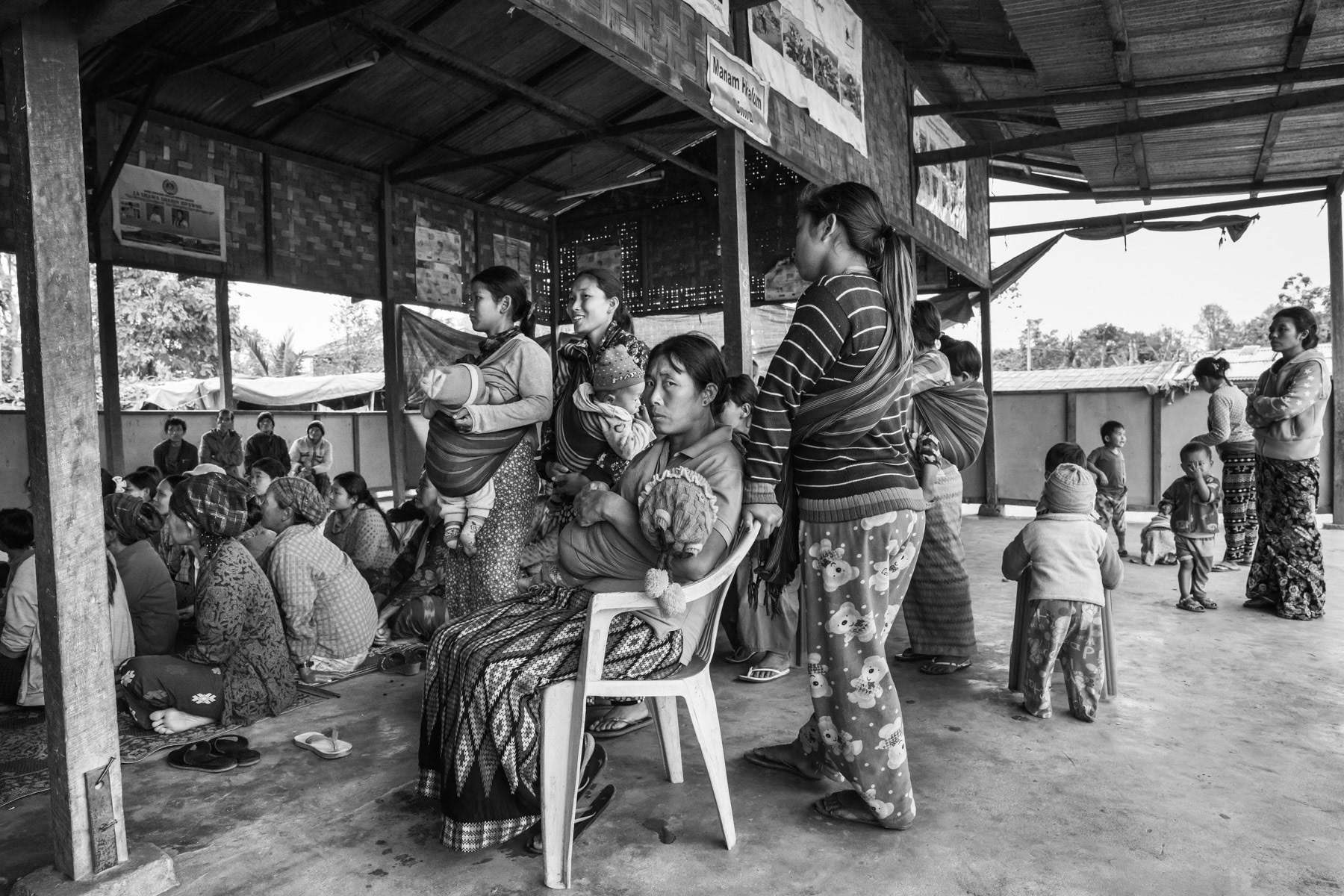
Kachin Women attending a mother and child healthcare workshop in a camp for internally displaced persons. Over 100,000 Kachin are displaced within the Kachin State since the armed conflict resumed in 2011 between the Myanmar military and the Kachin Independence Army (KIA). Jan Mai Kuang IDP camp near Myitkyina in government controlled territory, Myanmar, March 2019

Water well in a village near banana plantations. The plantations established and managed by Chinese companies using cheap labour among the Kachin IDP population and highly toxic chemicals and fertilisers causing fatal health issues among the plantation workers. The used land is often expropriated and owned by IDPs that do not have any mean to fight widespread land grab. The environmental footprint is also disastrous for the soil, drinkable water and the rivers with infested water, dead fish and soil as result. The bananas are being packed in boxes marked "from Equador" or "from Laos" and driven directly to China. Dajang village, Waingmaw, Kachin State, Myanmar, March 2019
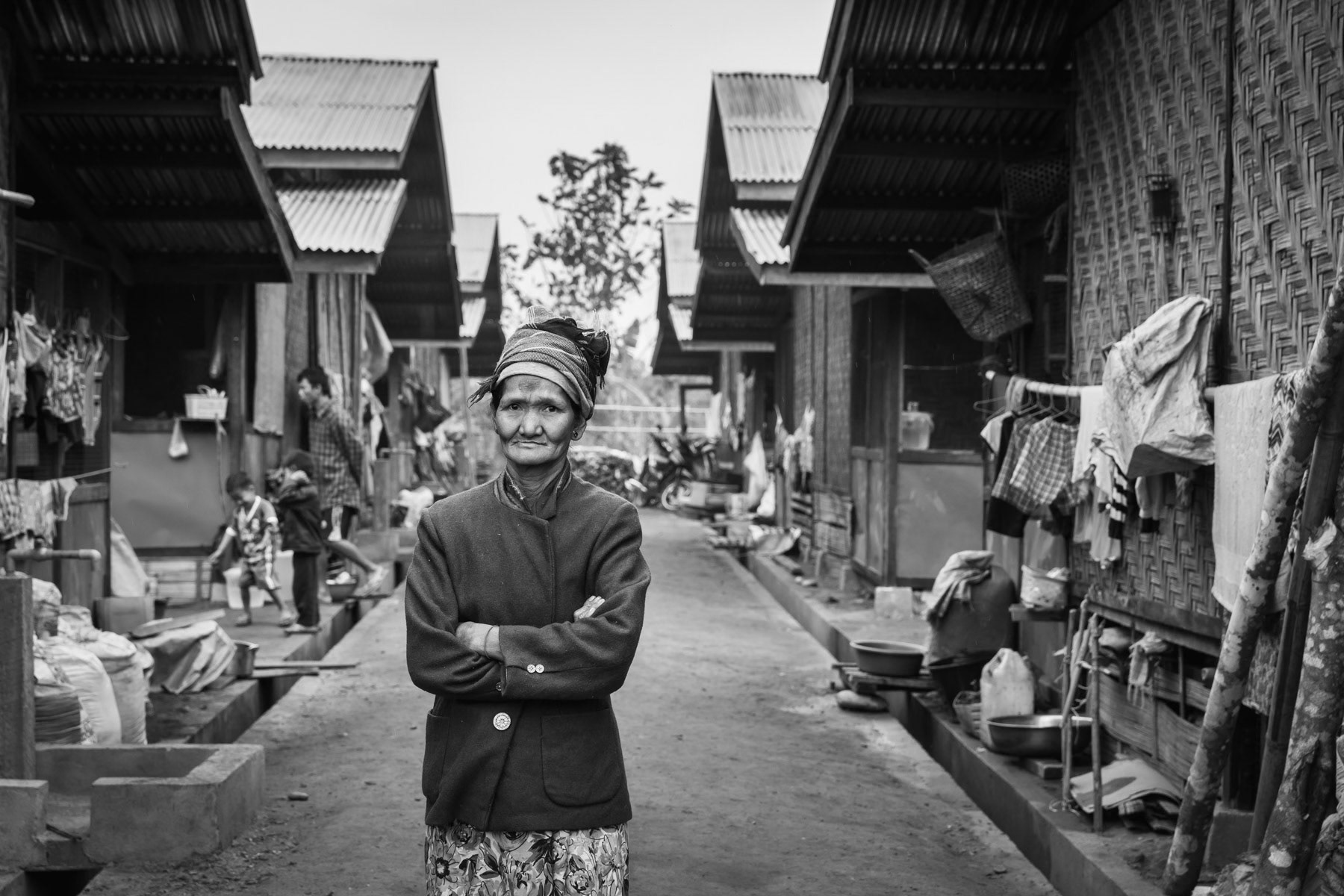
A Kachin elderly person displaced since 2011 by conflict in Kachin State. Trinity IDP camp, Myitkyina, Myanmar, February 2019
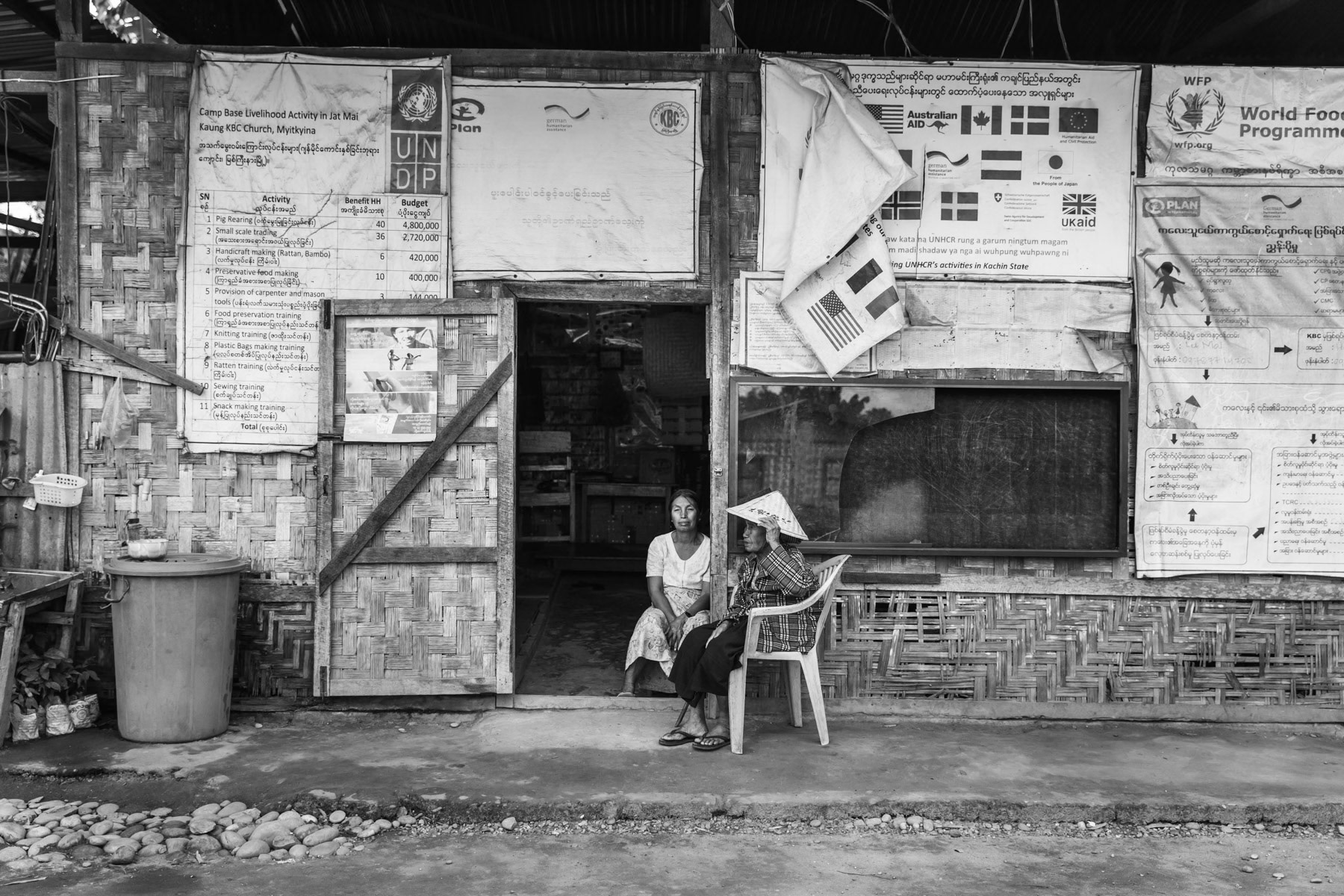
Camp for internally displaced persons from Kachin State. Over 100,000 Kachin are displaced within the Kachin State since the armed conflict resumed in 2011 between the Myanmar military and the Kachin Independence Army (KIA). Mai Jan Kuang IDP camp near Myitkyina in government controlled territory, Myanmar, March 2019

Improvised classroom in a camp for Kachin internally displaced persons. Over 100,000 Kachin have been living in 130 camps spread accross govrnment and Kachin Independence Army controlled territory. Waingmaw IDP camp in government controlled Waingmaw township, Burma, March 2019

Kachin girl that has been living since 2011 in a camp for internally displaced persons in Kachin State. Over 100,000 Kachin are displaced within their own country as a result of a long lasting armed conflict between the Myanmar Army and the Kachin Independence Army {KIA). Ziun IDP camp in government controlled territory, Myanmar, March 2019
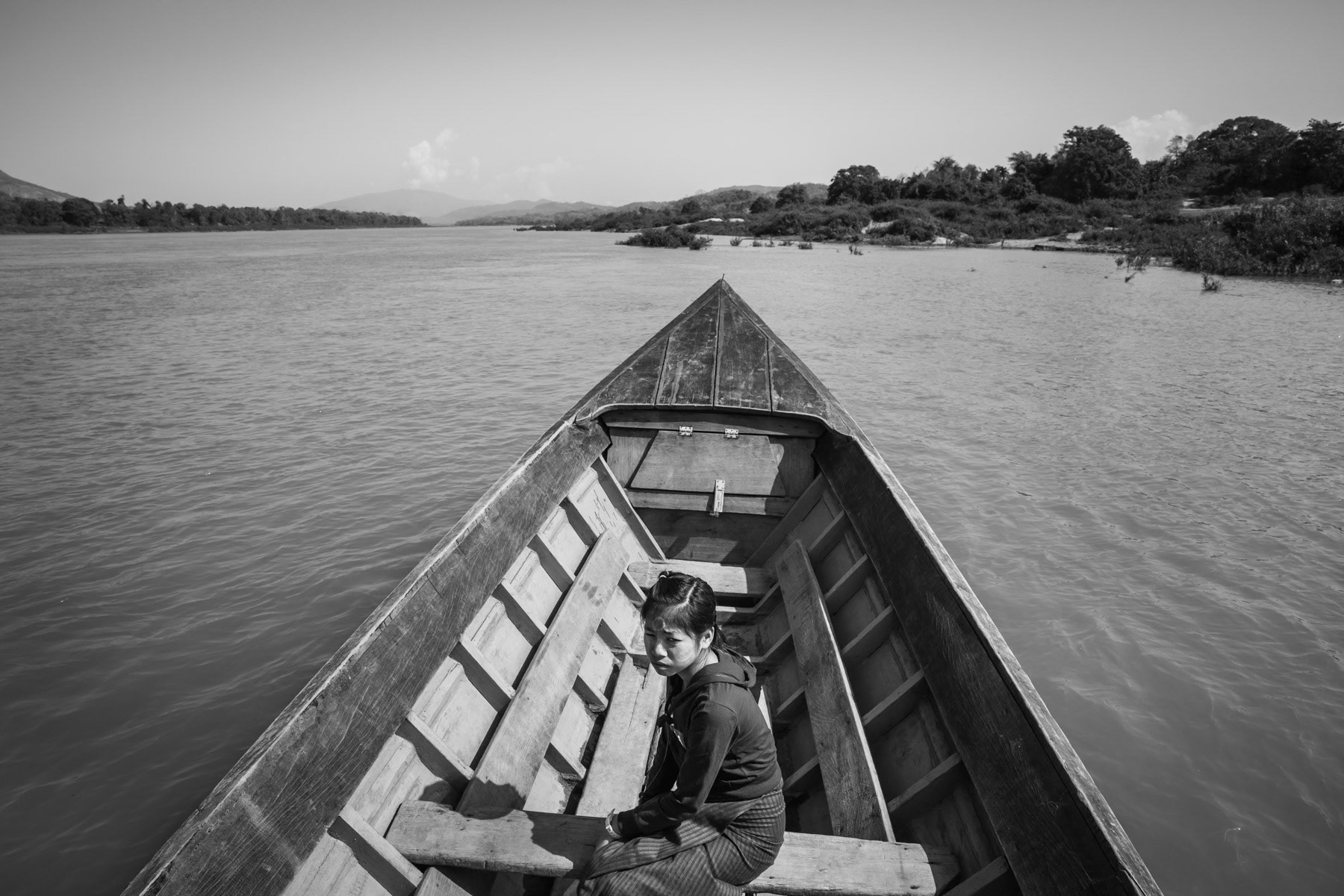
Crossing the Irrawaddy river. A controversial dam project in this area as part of the Chinese Belt and Road infrastructure projects that will undoubtly erase numerous villages along the river and deprive the local Kachin population of fertile lands. The project has been shelved but could be restarted very soon. The electricity produced by the dam would for more than 90% go to bordering Yunnan province in China. Irrawaddy river, Myitkyina, Kachin State, March 2019

